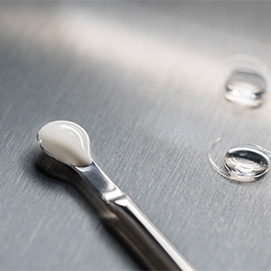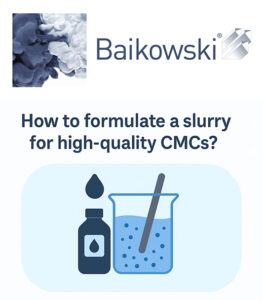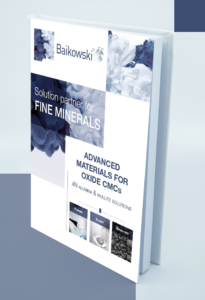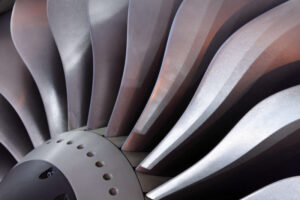The exploration of combining ceramic matrices with reinforcing fibers has started in the 1980s with the aim of creating advanced material composites with high temperature resistance and lightweight properties.
It was primarily driven by the aerospace industry’s need to enhance the performance of vital components like turbine blades, thermal protection systems (TPS), structural elements, brakes and more, as well as to decrease fuel consumption.
 As the aviation industry continues to shape the future and work towards decarbonization, Ceramic Matrix Composites (CMCs) play a crucial role and are experiencing fast growth.
As the aviation industry continues to shape the future and work towards decarbonization, Ceramic Matrix Composites (CMCs) play a crucial role and are experiencing fast growth.
Baikowski®, at the forefront of high-performance Ox/Ox CMC material development, has actively contributed to this paradigm shift. These CMCs offer temperature stability, low density, hardness, wear resistance and above all, they are not sensitive to oxidation compare to other CMCs.
Moreover, thanks to constant innovation in decarbonizing our manufacturing processes, Baikowski® oxide solutions benefit from a comprehensive Life Cycle Assessment. This involves assessing the environmental impact at each stage of the material’s life cycle to promote the implementation of sustainable practices and a more eco-friendly supply chain.
Baikowski® advanced 4N alumina & mullite solutions for Ox/Ox CMCs
 Developing high quality Ox/Ox CMCs with superior performance properties for critical components required precise control over the characteristics of high purity alumina-based powders and slurries such as :
Developing high quality Ox/Ox CMCs with superior performance properties for critical components required precise control over the characteristics of high purity alumina-based powders and slurries such as :
- 🌟 A well-dispersed and stable slurry, which is crucial for achieving the desired microstructure and mechanical properties of the final CMC, requires a fine and uniform particle distribution powder (< 1μm).
- 🌟 An optimal viscosity guarantees the desired structural integrity of the component
- 🌟 A high sintering reactivity allows for control over porosity and ensures rapid and efficient densification. These factors, in turn, impact CMC’s mechanical strength and thermal properties.
- 🌟 A densification temperature kept as low as possible is determinant to preserve the structural and mechanical properties of the fibers and to ensure the overall stability of the CMC.
- 💡 Moreover, dopants can be added to improve specific characteristics, do not hesitate to contact us for tailor design. 💡
Among Baikowski® CMC offering, our SM8 powder and ready-to-use BA15-PSS slurry stand out, as well as our latest innovation SLAz, a High Purity Alumina Slurry with Nano-Zirconia Doping. Additionally, we have innovatively created a mullite solution for a better compatibility with mullite fibers.
See our 4N alumina & mullite solutions for CMCs
Ox/Ox CMC benefits for aero-engine applications
Combining oxide matrix with oxide fiber, such as alumina or mullite, results in better overall mechanical, physical and thermal properties. These CMCs offer reliable performance at temperatures up to 1,300°C, and no need for cooling air requirements, allowing the end products to be used in different aero-engine applications, such as combustion liners of gas turbine engines, heat shields and exhaust cones for example.
They have spurred innovation and efficiency in particular thanks to their :
 Mechanical strength
Mechanical strength
Ox/Ox CMCs’ mechanical strength proves advantageous in engine components subjected to mechanical stresses, such as combustion liners. Their robust nature ensures liners to withstand the intense forces and rapid temperature fluctuations associated with the combustion process.
Corrosion Resistance
Corrosion resistance is also a cornerstone in fortifying the structural integrity of critical parts and significantly extend the lifespan and reliability of aerospace components exposed to harsh atmospheric conditions.
Over the years, CMCs in general and Ox/Ox CMCs have found applications beyond the aerospace industry, demonstrating their versatility and performance advantages in various fields, including the automotive, energy, electronics, defense and medical sectors.
For a deeper dive into our advanced materials for oxide CMCs and insights into what is an outstanding matrix and how is a slurry formulated for an Ox/Ox CMC of high quality, explore our dedicated white paper 👇
ADVANCED MATERIAL FOR OXIDE CMCs
White Paper
4N Alumina & Mullite solutions

Discover all our White Papers

 Mechanical strength
Mechanical strength